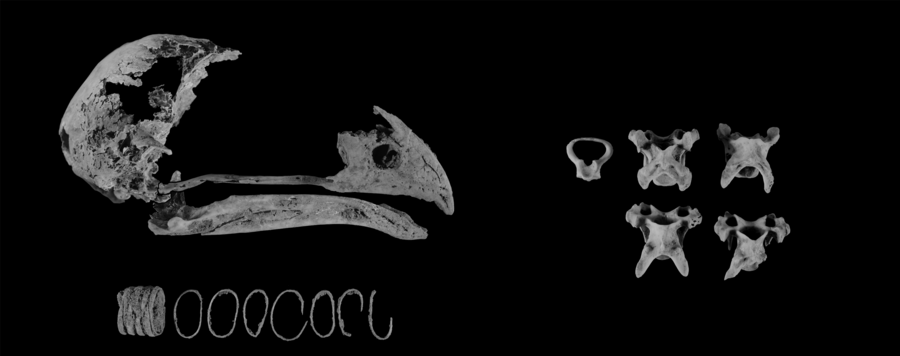
A Gyrfalcon from a Uyghurian well in Karabalgasun, Central Mongolia
A partial skeleton of a female Gyrfalcon, dated at 1044–1214 AD, was excavated in an abandoned well in Karabalgasun, Central Mongolia. Karabalgasun lies in the Orkhon Valley, a landscape of special symbolic, political and spiritual significance in the age of the Turk, Uyghur and Mongol empires. The falcon was interred during the reign of the Khitan (Liao) dynasty. The vertebral ribs show healed fractures, a sign that the bird was nursed in captivity. For falconry was an important element at the imperial court, the presence of the Gyrfalcon indicates the importance of the Orkhon Valley as a place of annual hunting rituals and as a sacred landscape during the reign of the Liao dynasty. The lack of wings, tail and clawed feet of the falcon carcass points towards a post-mortem decorative or ritual use of these body parts. Since Gyrfalcons do not naturally occur in Mongolia, this individual bird may have been a particular symbol of status.






